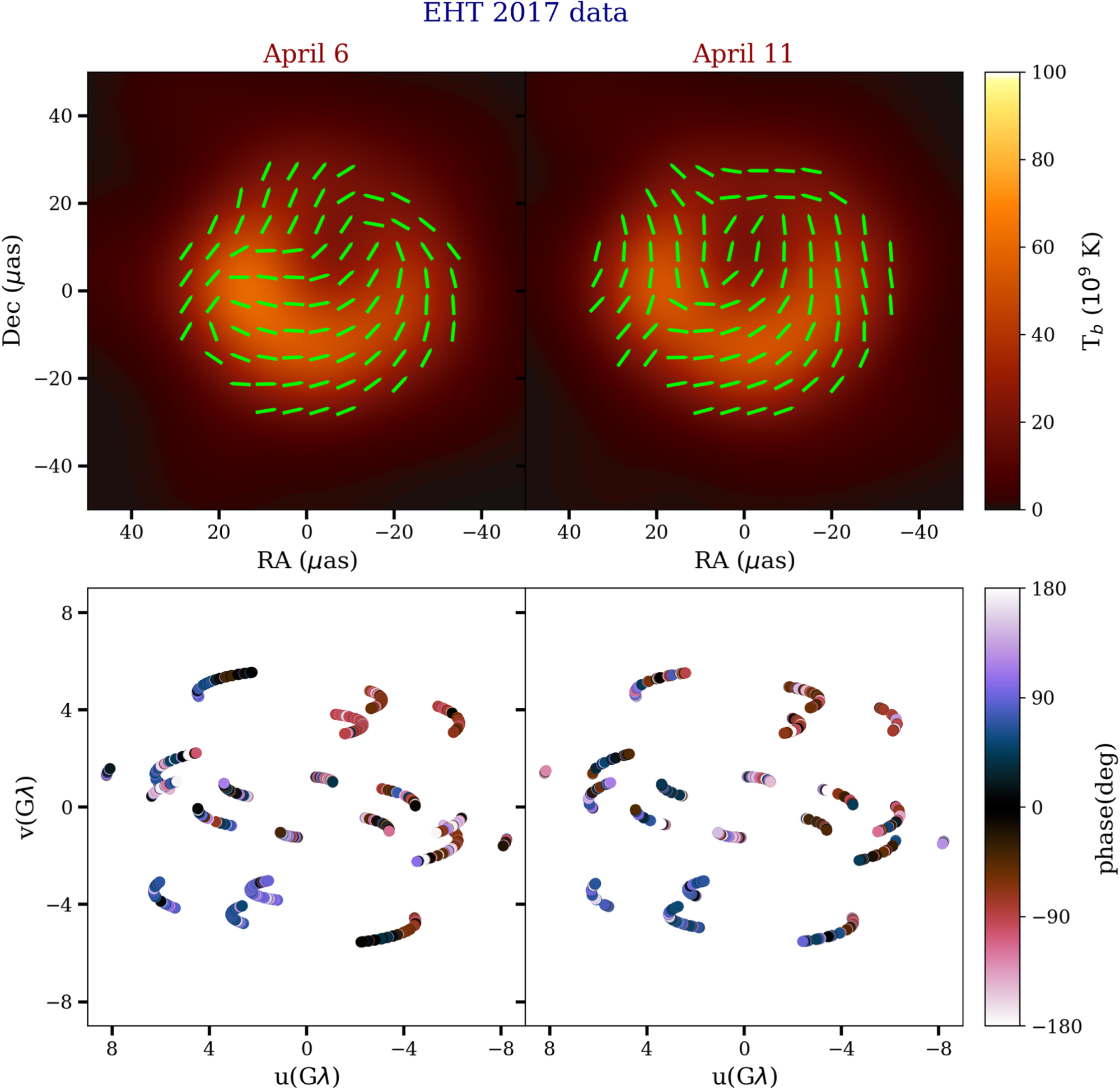
The E-B-correlation in Resolved Polarized Images: Connections to Astrophysics of Black Holes
The Event Horizon Telescope Collaboration (EHTC) recently published an image of the M87*, showing a ring structure consistent with general relativity. While the image depicts a swirling mass of hot, magnetized plasma, the exact magnetic field arrangement remains uncertain. Researchers analyzed EHT 2017 data and simulations using new EB-correlation function, using Zernike polynomials to extract features related to the black hole’s spin and magnetic field, emphasizing the need for further investigation.
The EB-correlation is the correlation between the absolute visual magnitude and the B-V color index (measure of a star’s color) of a star. This correlation is often used to estimate the distance to stars. In this article, an in-depth analysis of constructing the E B correlation function is done using different approaches, in which they aim to extract information about plasma astrophysics.
Using the EHT 2017 data for the M87*, distinct features can be seen in the discrete phase maps, which appear generally consistent between the data from April 6 and April 11. Motivated by this, synthetic data is made using the time-averaged images of the GRMHD simulations (computational models used to study the behavior of magnetized fluids in the presence of strong gravitational fields) of H-AMR (H-band Astrometric Magnitude Range, refers to the range of magnitudes observable in the near-infrared H-band where precise astrometric measurements can be made) using the EHT coverage from April 11. The results are then compared with those derived from the EHT data from 2017.
During this investigation, researchers examined various Gaussian and geometrical ring models to understand what causes non-zero correlation phases. For Gaussian models, they found that the phase remains zero or 180 degrees unless there are asymmetries in the electric vector polarization angle (EVPA) ticks. Extending this to the metrical ring models with a spin of a = +0.5, they investigated different magnetic and velocity field geometries and source inclinations. They observed that non-zero inclinations and certain magnetic field geometries lead to distinct E B-correlation phases. This indicates that both magnetic and velocity field geometries play crucial roles in determining the EB-correlation phase. Numerical models are then used to describe how polarized images are formed during the calculation of radiative transfer.
Synthetic data from time-averaged GRMHD simulations are used to investigate the computation of the E B- correlation phase. The E B- correlation phase maps are inferred and analyzed, revealing distinct patterns despite the sparse up-coverage. Zernike polynomials are used to reconstruct the phase maps, showing good agreement with the original data. The results from the M2 method were then compared with the M1 results, showing similarity. Finally, a comparison with H-AMR simulations are made, showing agreement in MAD cases but differences in SANE simulations due to turbulence levels.
As a conclusion, the researchers introduced the EB-correlation function and analyzed its properties using EHT 2017 data and synthetic data from GRMHD simulations. THeyr key findings include:
- The EB-correlation phase map from EHT 2017 data shows both dark and bright regions
- Asymmetries in EVPAs play a role in generation non-zero phases in different toy models
- GRMHD simulations exhibit distinct features in the EB-correlation phase map, particularly noticeable in MAD simulations
- Zernike polynomials break degeneracies between qualitatively similar models
- only a small set of geometrically ring models match the EB_correlatino function patterns, breaking degeneracies
- qualitative comparison with EHT data suggests a mixture of dark and bright regions, indicating the need to vary BH spin and electron temperature profiles to find the favored model

